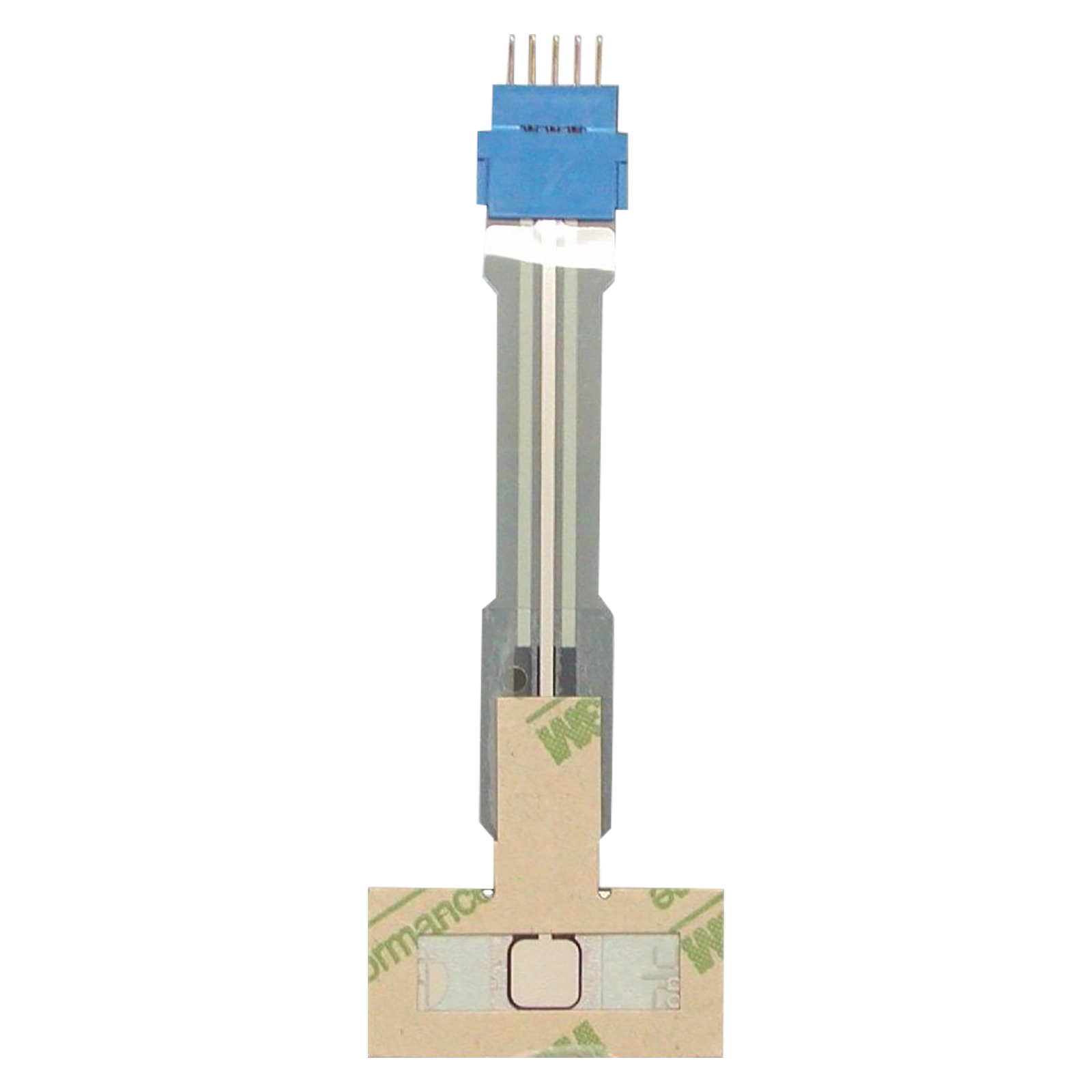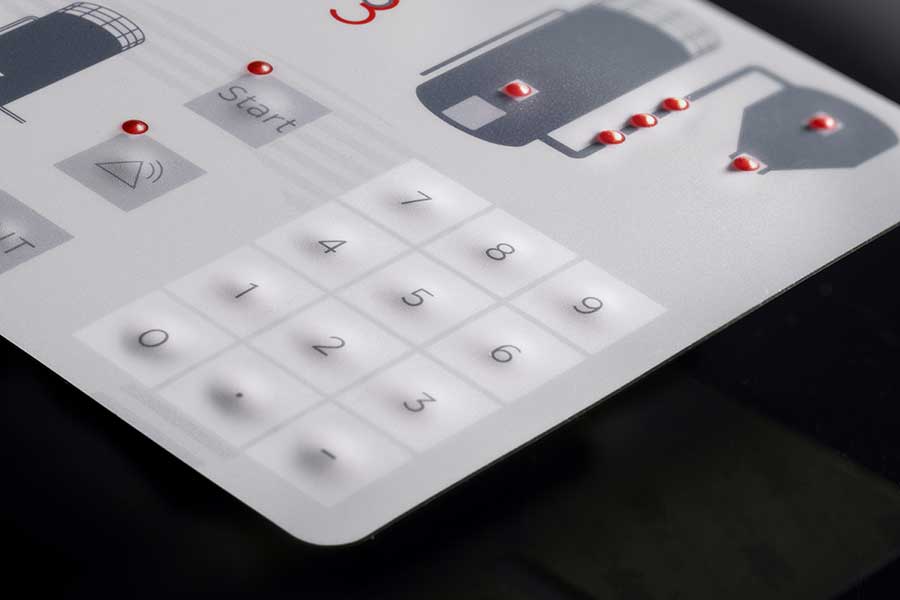How to Select the Right Membrane Switch for Your Technology Needs
How to Select the Right Membrane Switch for Your Technology Needs
Blog Article
Membrane Layer Switch Over Innovation: The Key to Reputable and Cost-efficient Interfaces
Membrane switch modern technology has actually arised as a pivotal component in the design of user interfaces, giving both integrity and cost-effectiveness across a varied array of applications. As we discover the complex advantages of membrane switches, their potential for development increases inquiries concerning future applications and progressing trends.
Understanding Membrane Layer Switch Over Modern Technology
Membrane switch modern technology is an extensively utilized interface remedy in numerous electronic gadgets, using a smooth mix of capability and style. This technology integrates several layers of products, typically containing a visuals overlay, spacer layer, and a circuit layer. The visuals overlay displays the user interface aspects, while the spacer layer divides the circuit layer from the overlay till a customer turns on a switch.
When stress is put on the overlay, the circuit layer finishes the electric circuit, sending a signal to the gadget. This device enables different arrangements, including tactile responses and backlighting options, enhancing individual interaction. Membrane switches are usually manufactured using sturdy products such as polyester or polycarbonate, making sure long life and resistance to ecological elements like moisture and dirt.
The flexibility of membrane changes allows their application in varied markets, consisting of clinical gadgets, consumer electronics, and industrial controls. Their small style permits assimilation into space-constrained atmospheres, supplying an efficient interface without jeopardizing aesthetic charm. Understanding the details of membrane switch innovation is important for manufacturers and developers looking for to produce dependable and reliable human-machine interfaces.
Trick Advantages of Membrane Layer Switches
While various user interface solutions exist, membrane layer switches deal unique benefits that make them a preferred selection in numerous applications. Among the primary benefits is their sturdiness; membrane layer buttons are designed to stand up to harsh environmental problems, including wetness, dirt, and temperature variations, making certain long-lasting efficiency. This resilience considerably decreases the need for constant substitutes, therefore lowering total upkeep prices.

Additionally, membrane buttons are light-weight and compact, making them suitable for applications where room is restricted. Their inconspicuous layout adds to a smooth look without compromising capability.
Cost-effectiveness is also a remarkable benefit, as the manufacturing process for membrane switches over tends to be much less expensive contrasted to standard mechanical switches. This price, incorporated with their integrity and ease of installment, settings membrane switches over as a functional service for a vast array of markets looking for efficient and reliable interface.
Applications Throughout Various Industries
Exactly how do membrane buttons adapt to the diverse demands of various sectors? Membrane button modern technology is increasingly acknowledged for its convenience, making it suitable for a wide array of applications across several sectors. In the medical field, membrane switches are made use of in diagnostic equipment and individual monitoring gadgets, where their resilience and convenience of cleaning are important for maintaining health standards. The vehicle sector uses these switches in browse around these guys control panels and control board, using a streamlined visual while ensuring easy to use procedure.
In customer electronic devices, membrane switches give a compact remedy for push-button controls and home devices, enhancing individual experience with instinctive style. Furthermore, the commercial industry leverages membrane buttons for machinery control board, taking advantage of their resistance to rough environments, such as moisture and dust.
Military and aerospace applications also utilize membrane buttons for their dependability and capacity to hold up against extreme conditions, guaranteeing operational efficiency in vital circumstances. The food and beverage industry adopts these buttons for automated systems, where hygiene and simplicity of operation are critical (membrane switch). Eventually, membrane layer buttons are tailored to fulfill the special needs of each sector, showing their necessary role in modern-day technology user interfaces
Layout and Modification Choices

In the world of membrane button modern technology, layout and personalization options play a crucial function in improving performance and individual interaction. These buttons can be customized to meet details functional demands and aesthetic preferences, making them functional components in numerous applications.
One of the primary personalization alternatives is the layout of the button itself, which can be designed to fit distinct user interfaces and ergonomic factors to consider. By readjusting the form, dimension, and arrangement of switches, manufacturers can produce intuitive styles that help with convenience of use. Furthermore, the incorporation of various shades and graphic overlays permits for branding and improved visibility, making certain that customers can swiftly recognize functions.
Additionally, membrane switches can be engineered with numerous tactile responses mechanisms, such as increased switches or distinct clicks, to enhance the individual experience. Different materials can additionally be chosen for durability and environmental resistance, resolving factors such as moisture, find temperature changes, and chemical direct exposure.
Ultimately, the substantial layout and customization options offered in membrane layer switch technology empower businesses to develop customized solutions that not only satisfy useful requirements however also straighten with their branding and functional requirements.

Future Patterns in Membrane Layer Buttons
As membrane layer button technology proceeds to progress, future fads are significantly concentrated on boosting user experience and integrating innovative functionalities. One considerable pattern is the combination of touch-sensitive and capacitive modern technologies right into traditional membrane switches. This advancement permits for even more intuitive user interfaces, providing tactile feedback while keeping a streamlined style.
An additional arising pattern is making use of environmentally pleasant materials, driven by the expanding demand for lasting manufacturing practices. Suppliers are looking for to decrease their browse around here carbon impact by using recyclable substratums and low-impact inks, lining up with worldwide sustainability goals.
In addition, the surge of the Net of Things (IoT) is prompting the consolidation of wise attributes right into membrane layer buttons. Enhanced connection options will make it possible for tools to interact with each other, permitting smooth integration right into wider systems.
Furthermore, developments in printing technologies, such as electronic printing, are enabling for greater layout adaptability and personalization. This allows manufacturers to generate complex styles and dynamic shades cost-effectively.

Final Thought
Finally, membrane layer switch technology represents a vital technology in individual interface design, supplying considerable advantages in longevity, personalization, and cost-effectiveness. Its widespread applicability across varied markets underscores its relevance in contemporary technology. As innovations proceed to arise, especially in touch-sensitive user interfaces and sustainable products, the potential for membrane layer changes to boost user experience and performance stays encouraging. Continued exploration of this modern technology will likely produce better renovations and broaden its scope in future applications.
Report this page